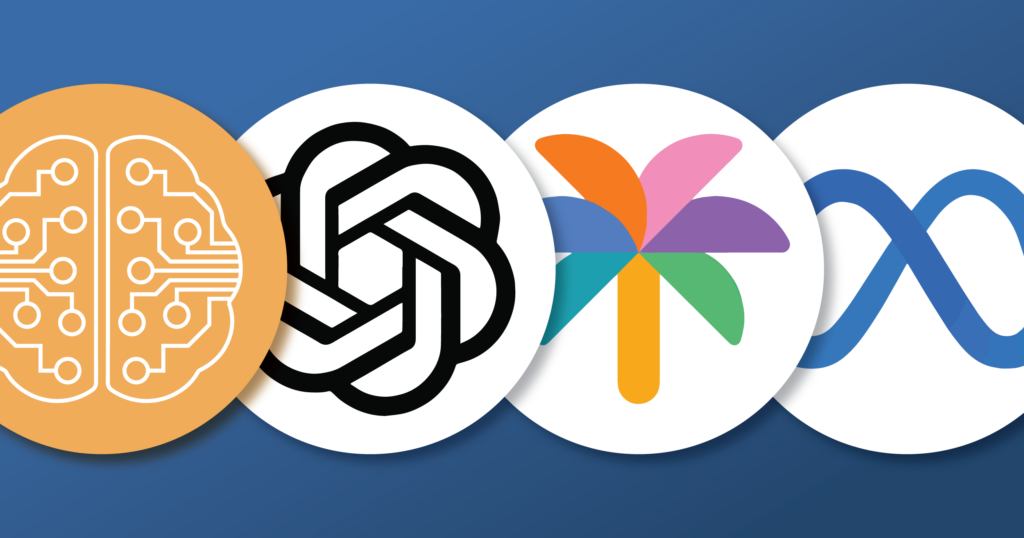Revolutionizing AI: The Power of Large Language Models
Author: Konstantin Galperin
Large Language Models (LLMs) have revolutionized the field of artificial intelligence (AI) by demonstrating remarkable capabilities in understanding and generating human language. These models, such as OpenAI’s GPT-4, are built upon deep learning techniques and vast amounts of training data, enabling them to perform a wide range of language-related tasks. In this article, we will delve into the mechanism behind LLMs, explore their business use cases, and examine the advantages and disadvantages of their implementation.
Mechanism of Large Language Models:
Large Language Models are based on a deep learning architecture called a transformer. Transformers consist of multiple layers of attention and/or self-attention layers, combined with other artificial neural network elements such as word embedding, fully connected layers, and softmax operation at the final stage that allow the model to understand the context and relationships between different words in a sentence. The training process involves presenting the model with massive amounts of text data and adjusting its parameters to minimize the difference between its predicted outputs and the actual outputs.
Attention is a fundamental mechanism in large language models that enables them to process and understand textual information. It allows the model to selectively focus on different parts of the input sequence (e.g., each word in a sentence), assigning varying degrees of importance to different elements, depending on how relevant any particular part of the input is to the output. Self-attention, also known as intra-attention or scaled dot-product attention, is a specific type of attention mechanism commonly used in these models. In self-attention, the model considers each element of the input sequence and calculates its relevance to all other elements of the same input. This is achieved by computing attention scores between elements and using those scores to weigh the importance of each element during processing. By doing so, self-attention allows the model to capture contextual relationships and dependencies between different parts of the input.
Stacking multiple layers of self-attention is a key factor in the success of large language models. Each layer in the stack learns to model increasingly complex patterns and dependencies in the data. The lower layers capture local relationships between neighboring elements, such as words within a phrase, while higher layers capture more global relationships, such as the connections between different phrases or concepts within a document. This hierarchical representation enables the model to learn hierarchical features and contextual information at different levels of granularity, leading to more accurate understanding and generation of text. Additionally, stacking layers provides the model with the ability to learn diverse representations and to capture a broader range of information, as each layer can specialize in different aspects of the input. The combination of attention and stacked layers in large language models has proven to be a powerful approach for various natural language processing tasks, including machine translation, text summarization, and question-answering.
Business Use Cases of Large Language Models:
Natural Language Understanding (NLU):
LLMs excel in tasks such as sentiment analysis, text classification, and named entity recognition. This enables businesses to automate customer support, analyze feedback, and extract valuable insights from large volumes of unstructured text data.
Customer Support and Service:
One of the most prominent applications of LLMs in businesses is customer support and service. With their ability to understand and generate human-like text, LLMs can efficiently handle a significant volume of customer queries, automating responses and providing timely assistance. This technology enables businesses to provide round-the-clock support, reduce response times, and enhance customer satisfaction.
Productivity Gains:
Implementing LLMs for customer support can lead to significant gains in productivity. By automating repetitive tasks, such as answering common queries or providing self-help solutions, businesses can free up their support teams to focus on more complex and value-added customer interactions. LLMs can provide instant responses, reducing wait times for customers and improving the overall support experience. Moreover, LLMs can learn from customer interactions, continuously improving their responses and offering personalized solutions.
Implementation Obstacles:
While LLMs offer great potential in customer support, there are several obstacles to consider during implementation. Firstly, ensuring that the LLMs understand the nuances of customer queries and provide accurate responses requires extensive training and fine-tuning. The models need to be carefully trained on relevant data to avoid potential biases and inconsistencies. Additionally, integrating LLMs into existing customer support systems and workflows can be complex and require careful planning to ensure a seamless transition without disrupting existing processes. LLMs might struggle with highly complex or ambiguous customer inquiries, requiring additional training and fine-tuning to ensure accurate responses.
Legal Research and Document Analysis:
Large Language Models can greatly benefit the Legal Department by assisting with legal research, document analysis, and contract review processes. LLMs have the potential to accelerate research tasks, extract relevant information from legal documents, and provide valuable insights for legal professionals.
Productivity Gains:
Implementing LLMs in a Legal Department can lead to significant productivity gains, including:
- Legal Research: LLMs can assist legal professionals in conducting comprehensive legal research by analyzing vast amounts of legal texts, case law, and statutes. They can quickly retrieve relevant information, summarize complex legal concepts, and provide valuable precedents, saving time and effort.
- Document Analysis: LLMs can analyze and extract key information from legal documents, contracts, and agreements. They can assist in identifying critical clauses, potential risks, and discrepancies, enabling legal professionals to focus on higher-level analysis and decision-making.
- Due Diligence: LLMs can streamline due diligence processes by analyzing large volumes of documents, such as contracts, financial statements, and regulatory filings. They can flag potential issues, identify anomalies, and provide insights to aid legal professionals in making informed decisions.
- Compliance Monitoring: LLMs can assist in monitoring and analyzing regulatory changes, ensuring organizations stay up-to-date with evolving legal requirements. They can identify relevant updates, interpret legal language, and provide recommendations for compliance.
Implementation Obstacles:
However, implementing LLMs in the Legal Department may present certain obstacles:
- Accuracy and Reliability: While LLMs can provide valuable insights, their output should always be verified by legal professionals. LLMs may not always interpret complex legal nuances accurately, making human oversight and review essential.
- Data Privacy and Security: Legal documents often contain sensitive and confidential information. Organizations must ensure robust data privacy and security measures when using LLMs for document analysis and research.
- Regulatory Compliance: Legal professionals must ensure that using LLMs for legal research and analysis complies with relevant legal and ethical guidelines. They need to consider issues such as attorney-client privilege, confidentiality, and conflicts of interest.
Data Analysis:
An interesting and new use case for LLMs involves their ability to generate code based on a plain text question or prompt. The generated code can then be run on a dataset with minimal setup. This can be as simple as asking for a single statistic or involve multiple calculations to produce a graph that you can interact with. For more information on this use case, make sure to follow our blog where we’ll be posting an in-depth walk-through with examples soon.
Large Language Models can be used to enhance and optimize various processes and tasks with their ability to understand and generate human language. Through the use of a deep learning architecture known as a transformer, LLMs understand the context and relationships between different words in a sentence and are therefore able to not only parse through text-based inputs but also generate accurate and relevant outputs. Business processes such as customer service and support, document analysis, and even data analysis can be enhanced with the use of LLMs to varying degrees. There are still some hurdles to clear but new use cases and possibilities are being discovered daily. Make sure to follow our blog for more information on LLMs and if you would like to explore how your business can be enhanced with LLMs, contact us today.



